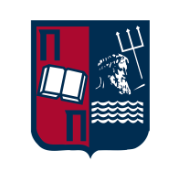This course focuses on the interconnection between entrepreneurial thinking and innovation. Upon successful completion of the course, the student will be able to:
- understand the differences between innovation and entrepreneurship and how the two work in conjunction to create dynamic startups.
- learn how to analyze markets when searching for potential segments to target
- select among strategies that could aid in growing customer base through inbound and outbound marketing
- recognize business innovation opportunities
- create a business plan around a minimum viable product
Course Contents
- Methods and tools of enhancing innovativeness and creativity (Mindmapping, SixHats, SCAMPER)
- Why startups are not smaller versions of large companies. Why Do Startups Fail
- How do you find your customer archetype? Types of Customers & Types of Business Models
- Relationship between Value Proposition and Customer Segments
- Customer Acquisition Models and Customer Acquisition Cost (CAC)
- How do you make your money? Revenue Stream and Pricing Revenue Streams
- What is most important for the business? Financial Resources & Financial Planning
- Intellectual Property – Patents & Trademarks
- Presenting your startup–pitching for funds(seed & venture capital, angels, etc)
- Business plan competitions and accelerator programs
Recommended Readings
- Adedeji, B. & Rahman, M. (2018). Innovative Teaching Methods and Entrepreneurship Education: A Review of Literature. Journal of Research in Business, Economics and Management 10 (1), 1807-1813
- Ghulam, N., Liñán, F., Fayolle, A., Krueger, N. y Walmsley, A. (2017). The Impact of Entrepreneurship Education in Higher Education: A Systematic Review and Research Agenda. Academy of Management Learning and Education, 16 (2), 277-299.
- Lindberg, O. J., Olofsson, A.D., Fransson, G., Hansson, A. (2017): Developing awareness of digital competence and skills through dialogue: a methodological reflection, The International Academy of Technology, Education and Development, p. 5679-5686.

